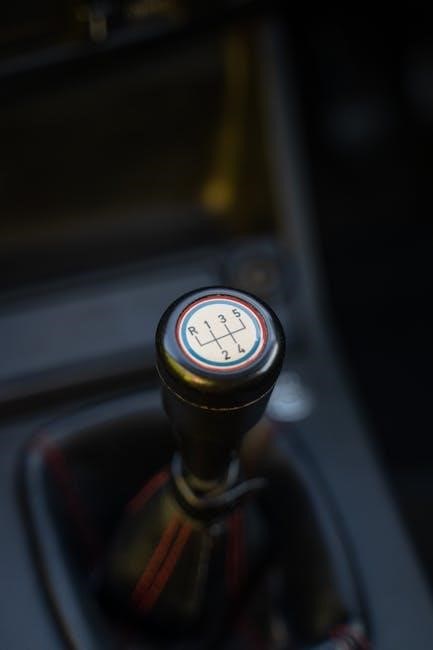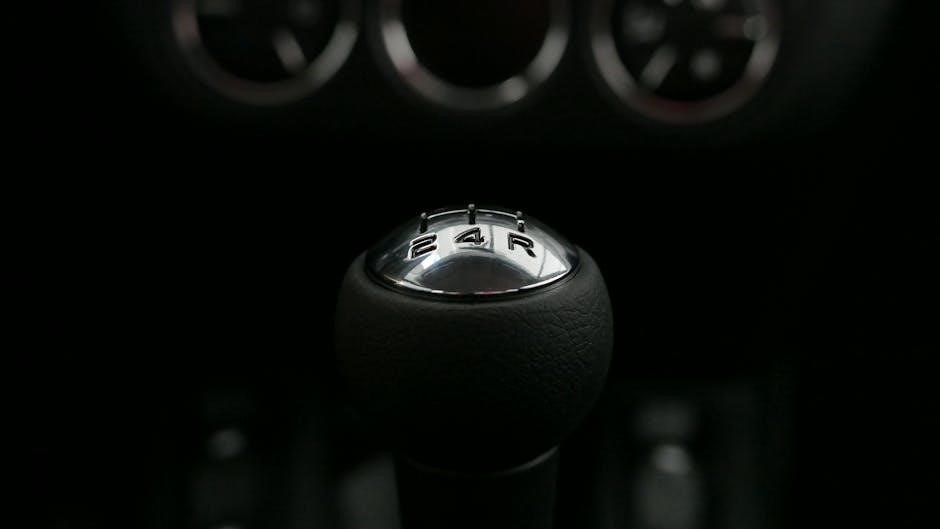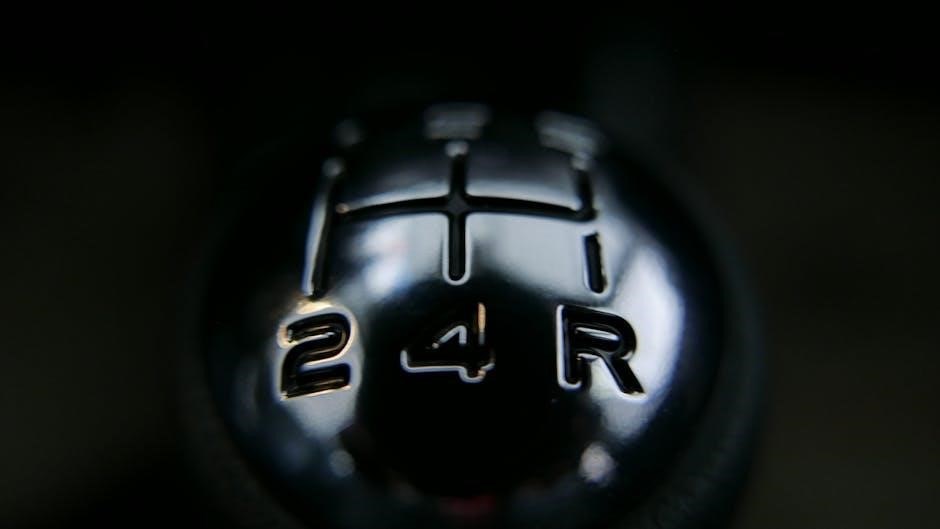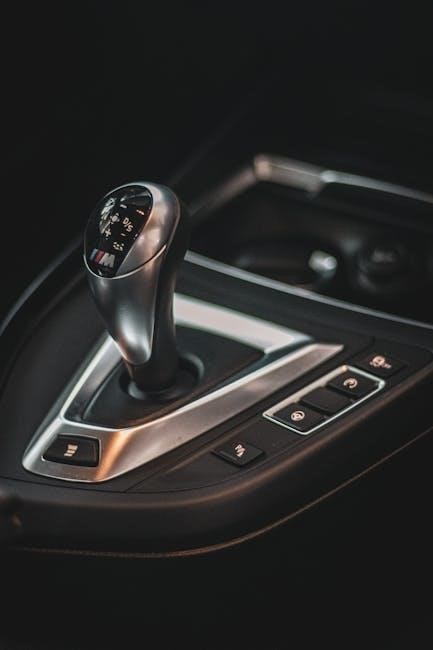The sequential gearbox manual is a type of non-synchronous manual transmission used mostly in racing and high-performance vehicles with a specific gear shifting mechanism and functionality always involved.
Definition and Purpose
A sequential gearbox manual is defined as a type of non-synchronous manual transmission that allows for quicker gear shifts and does not require the driver to depress and release the clutch pedal. The purpose of a sequential gearbox manual is to provide a more efficient and faster way of shifting gears, making it ideal for racing and high-performance vehicles. This type of transmission is designed to allow the driver to focus on the road and maintain control of the vehicle while shifting gears. The definition of a sequential gearbox manual also includes its unique gear shifting mechanism, which allows the driver to shift gears in a sequential order. The purpose of this mechanism is to provide a smooth and seamless transition between gears, resulting in improved performance and efficiency. Overall, the definition and purpose of a sequential gearbox manual are closely tied to its functionality and design.

Key Characteristics
Sequential gearbox manuals have distinct characteristics, including quick shifting and sequential gear engagement, with a specific mechanism always involved in the process naturally.
Design and Functionality
The design of a sequential gearbox manual is focused on providing a straightforward and efficient way to shift gears in a sequential manner. This is achieved through a specific arrangement of gears and a mechanism that allows the driver to select gears by pushing or pulling the gear lever forward or backward. The functionality of a sequential gearbox manual is centered around the idea of quick and precise gear shifting, which is essential for high-performance vehicles. The design and functionality of a sequential gearbox manual are closely related, with the design influencing the functionality and the functionality influencing the design. The result is a gearbox that is well-suited for racing and other high-performance applications, where quick and precise gear shifting is critical. The sequential gearbox manual is a complex system that requires careful design and engineering to function properly.

Comparison with Other Transmissions
Sequential gearbox manuals differ from other transmissions in terms of gear shifting mechanisms and overall performance capabilities always being compared online.
Differences from Automatic Transmission
A sequential gearbox manual has distinct differences from an automatic transmission, primarily in terms of driver input and gear shifting mechanisms. The sequential gearbox requires manual input from the driver to shift gears in a sequential order, whereas an automatic transmission automatically changes gears without driver intervention. This fundamental difference affects the driving experience and performance of the vehicle. The sequential gearbox is designed to provide faster and more precise gear shifts, making it suitable for high-performance and racing applications. In contrast, automatic transmissions are generally more convenient and easier to use in everyday driving situations. The differences between sequential gearbox manuals and automatic transmissions are significant, and each has its own unique characteristics and advantages. The choice between the two ultimately depends on the driver’s preferences and the intended use of the vehicle. Sequential gearboxes offer a unique driving experience.

Advantages and Applications
Sequential gearbox manuals offer improved speed and control with various applications in racing and high-performance vehicles always involved and utilized effectively.
Speed and Ease of Use
The sequential gearbox manual is designed to provide quick and seamless gear shifts, allowing drivers to focus on the road and maintain control of their vehicle.
The gear shifting mechanism is simple and intuitive, making it easy for drivers to navigate through the gears.
With a sequential gearbox manual, drivers can shift gears quickly and smoothly, without the need to press the clutch pedal.
This allows for faster acceleration and improved performance, making it ideal for racing and high-performance applications.
The ease of use and speed of the sequential gearbox manual make it a popular choice among drivers who value precision and control.
The sequential gearbox manual is also designed to be user-friendly, with a simple and ergonomic gear shifting mechanism that reduces driver fatigue.
Overall, the sequential gearbox manual offers a unique combination of speed, ease of use, and control, making it a popular choice among drivers.
The sequential gearbox manual is a reliable and efficient transmission system.

Technical Details
Sequential gearbox manual involves complex engineering and mechanical components always requiring precise technical specifications and details.
Clutch System and Torque Transfer
The clutch system in a sequential gearbox manual plays a crucial role in torque transfer, allowing for smooth and efficient shifting between gears. This system is designed to withstand high stresses and loads, making it suitable for high-performance applications. The clutch system can be used with most conventional manual transmissions, and its design allows for quick and precise engagement and disengagement of the clutch. In a sequential gearbox, the clutch system is typically integrated with the gear shifting mechanism, enabling seamless torque transfer and minimizing power loss. The clutch system’s performance is critical to the overall efficiency and reliability of the sequential gearbox manual, and its design and functionality are carefully optimized to meet the demands of high-performance driving. The result is a highly efficient and reliable system that enables rapid and precise shifting.
